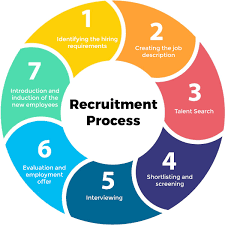Hiring is a strategic, complex process that requires an effective team. While hiring is about more than just publishing job ads, screening CVs and providing a shortlist of candidates, at its core it’s an organisational function that determines the strength and health of a company.
Recruiter
A recruiter spearheads the recruitment planning and overall process and maintains the lion’s share of communication with applicants throughout the interview and assessment stages. A good recruiter will use an efficient, well-organised system to streamline the entire recruitment process, from ad creation to candidate sourcing and evaluation. For information on a procurement recruitment agency, go to Talent Drive, a leading procurement recruitment agency.
HR & Office Manager
The rest of the recruitment team is composed of various people depending on the company size and industry. There might be one dedicated Recruiter, or a larger HR team (HR Generalists and/or Head of Talent). HR professionals are responsible for the administrative aspects of recruiting – putting in requisitions, interviewing, disqualifying and/or moving candidates through the pipeline, sending assessments and ultimately making a decision on new hires. They will also work with the recruiter to help coordinate the recruitment process with other teams within the organisation, especially the Office and Finance managers.
Employee Referrals
Having an internal referral programme can be very effective and reduce the time it takes to find a quality candidate. However, it should be an added tool in your recruitment arsenal – not your only source of quality talent. Additionally, if you rely solely on employee referrals, you can risk building homogenous teams, as candidates are often connected to others who have similar backgrounds and career paths.
Job Boards
There are a number of job boards that can be useful for finding qualified candidates, such as LinkedIn, Indeed, and Glassdoor. When submitting jobs on these platforms, it’s important to include clear job descriptions and specific requirements to make sure you’re getting the right kind of candidates.
Past Applicants
Keeping track of applicants who were rejected at an earlier stage in the recruitment process can be very resourceful. The best way to do this is by offering constructive feedback and providing a positive candidate experience.
Keeping track of the input versus output of your team will let you know when there is a hiring need. When an existing employee hands in their notice, or you are not able to meet a project deadline with the current headcount, it’s time to start thinking about new hires. Moreover, it’s good to keep up with the performance of your existing team and note any gaps that need to be filled.

